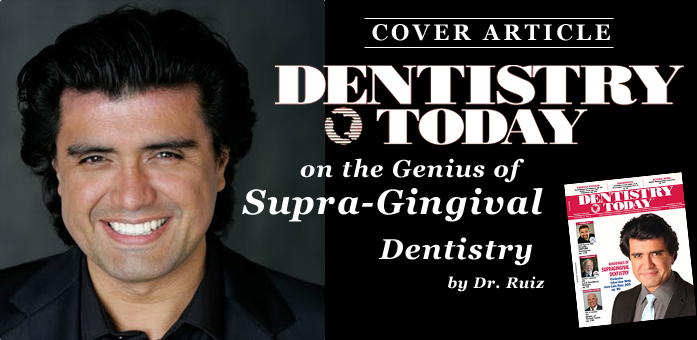
For years Dr. Ruiz has been advocating the great benefits of supra-gingival dentistry and the profession is listening as is evident by the cover interview on the March 2010 edition of Dentistry Today on that subject.
Learn the great benefits these innovative techniques have for your patients and for you. It will truly revolutionize the way you do dentistry; it will make it easier, faster and more predictable.

An excerpt from the cover article:
Dr. Adams: How does the concept of supragingival dentistry relate to the clinical realities around tissue control issues and the proper use of impression materials?
Dr. Ruiz: When done correctly, traditional subgingival preparations require that we first prepare an initial equagingival preparation margin. Then retraction cord is placed in order to expose subgingival tooth structure, and the margin is placed subgingivally. After this difficult procedure, a second, smaller cord must be placed in order to take a proper impression of the subgingival margin. This procedure, along with taking an excellent impression, is technically very challenging; in fact, it is one of the most difficult and unsuccessful procedures in dentistry, as dental technicians around the country can attest to. In his lectures, Dr. Christensen found that interviewed dental laboratory owners report that as many as 90% of the impressions received have less-than-adequate margin registration/definition.
Click here to Read the Cover Article on Dr. Ruiz in Dentistry Today

